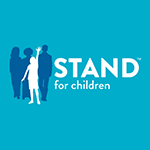School-Age Literacy
Effective early reading habits are the backbone of a child’s academic success across all subjects. They are also predictive of a number of later life outcomes, including higher education attainment and income. Yet in 2011, more than two-thirds of fourth graders in U.S. public schools were not reading proficiently. For multiple reasons, living in poverty makes it even harder for children to learn. Half of all low-income fourth graders do not score above basic levels—a key step in reaching proficiency—on literacy assessments.
Fortunately, there’s a simple solution: children and parents reading together at home. Children at this age only spend 13% of their waking hours in school; the rest is mostly spent at home, where parents are their primary and most impactful teachers.
Parents readily acknowledge the value of their children’s reading skills, and they also often recognize the potential impact of their own involvement. But many struggle to follow through with their intention to regularly read with their children. For many parents, having to balance complex needs like (often multiple) jobs, childcare, and the constant calculations required of living with limited finances means reading simply isn’t built in to their day.
That’s why, in partnership with Stand for Children, a national non-profit dedicated to student success, we developed Every Child Reads, a family literacy program focused on making it easier for parents to support their children’s literacy attainment. This program aimed to help parents build sustainable, effective at-home reading habits by providing easy access to books and personalized support designed using behavioral science.
We piloted Every Child Reads with 50 families in Holyoke, MA. It received positive feedback from parents, but we don’t have a clear indication of how successful our pilots were at increasing the amount of time families spend reading outside of school. Because the intervention took place in people’s homes—and because we prioritized making it as behaviorally informed as possible (for example, not requiring parents to manually log reading time)—we faced trade-offs between effectiveness, measurability, and scale.
Nevertheless, the insights gleaned from applying a behavioral lens to the problem of low literacy levels, and specifically a lack of home reading, may support and strengthen other programs with similar aims, which is why we compiled key insights in Building Home Reading Habits.
Uncovering new insights and exploring the application of behavioral science in childhood literacy is one of many steps to level the playing field for more children later in life.
Interested in learning more about our behavioral approach to addressing gaps in childhood literacy? Reach out to us at education@ideas42.org or tweet @ideas42 to join the conversation.
Partners










